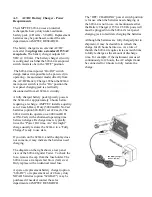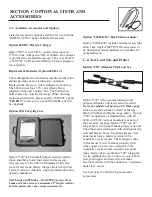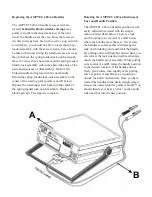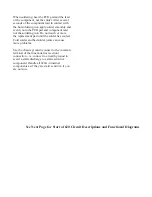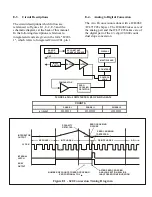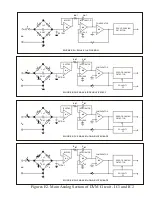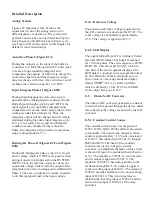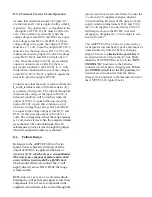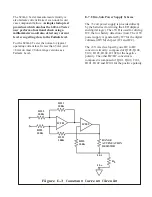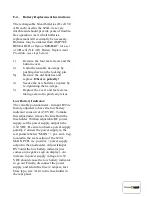
Detailed Description
Analog Section
Figures E2 diagrams A thru D shows the
equivalent circuit of the analog section in 3
different phases of operation. The system will
perform conversions at a rate determined by the
clock frequency 40,002 clock periods per cycle.
(see Figure E1B shown earlier in this chapter for
details of conversion timing).
Auto-Zero Phase I (Figure E2A)
During the Auto-Zero, the input of the buffer is
connected to V REF through switch 2, and switch
3 closes a loop around the integrator and
comparator, the purpose of which is to charge the
Auto-Zero capacitor until the integrator output
does not change with time. Also, switches 1 and 2
recharge the reference capacitor to V REF.
Input Integrate Phase II (Figure E2B)
During Input Integrate the Auto-Zero loop is
opened and the Analog Input is connected to the
Buffer Input through switch 4 and C REF if the
input signal is zero, the buffer, integrator and
comparator will see the same voltage that existed
in the previous state (Auto-Zero). Thus, the
integrator output will not change but will remain
stationary during the entire input integrate cycle.
If V
IN
is not equal to zero, and an unbalanced
condition exists compared to the Auto-Zero
Phase, the integrator will generate a ramp whose
slope is proportional to V
IN
.
Deintegrate Phase II (Figures E2C and Figures
E2D)
During the Deintegrate phase, switch 5 is closed
and a voltage which is V REF more positive than
during Auto-Zero is impressed on the BUFFER
INPUT. Thus, the reference capacitor stores the
equivalent voltage. This returns the output of the
integrator to the zero-crossing point established in
Phase I. The time, or number of counts, required
to do this is proportional to the input voltage.
E-4-1. Reference Voltage
The precision reference voltage required to do
the A/D conversion is developed by IC201. The
zener voltage is attenuated to approximately -
0.5V. This voltage is applied to IC2-7.
E-4-2. LED Display
The output format from IC2 is in Binary Coded
Decimal (BCD) format. Each digit is scanned
for 10 clock pulses. The scan sequence is D5 D4
D3 D2 D1. This drives Q1 thru Q5, which in
turn drivers the seven segment displays. The
BCD data is converted to seven segment format
by IC4. When the 620A-4 electronics are in
open circuit or over-range mode the display
flashes “
0000"
. IC5 is a 1 MHz oscillator
which is divided by 10 by IC6. The 100 KHz
clock output then goes to IC2.
E-5.
Ohms-To-DC Converter
The ohms-to-DC converter generates a constant
current which is passed through the device under
test to develop the voltage measured by the A/D
converter.
E-5-1. Constant Current Source
The constant current source is composed of
IC201, IC202, Q202, D203 and their associated
components. The input to the constant current
source is approxi1.05 volts, developed
at IC201-7 and connected to IC201-13 through
R209 and R210. The heart of the constant
current source is the voltage-to-current
converter. A simplified schematic of this circuit
is shown in Figure E-4 and described in Section
E-5-2. The amplifier of IC201-12 is an inverter,
and its output is applied to IC201-9. The
amplifier of IC201-8 has unity gain due to the
feedback through R213. Its output is applied
to the inverting input of IC202-3. The output of
IC202-6 provides feedback to the non-inverting
input of IC201-10. This circuit operates to
maintain the inverting input at IC202-3 and the
non-inverting input at IC202-2 at the same
potential.

